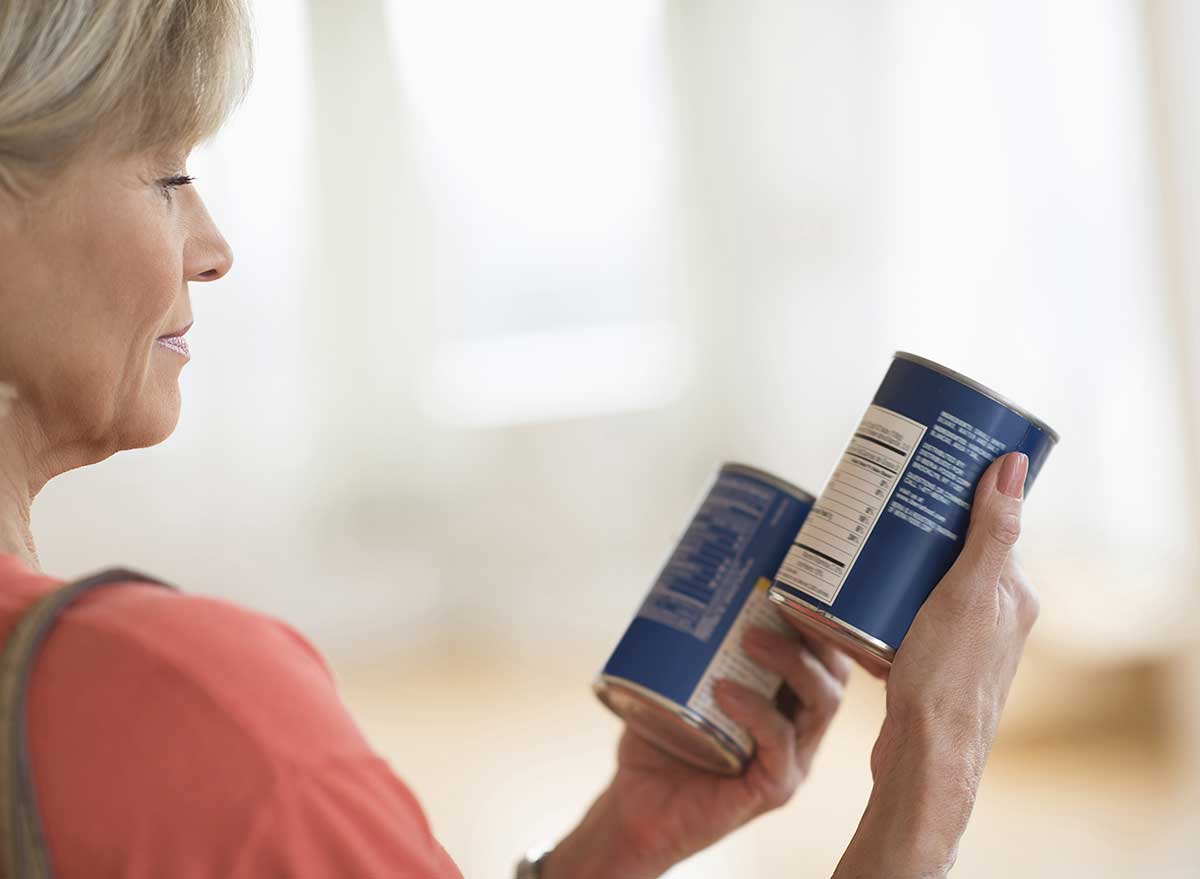7 Hidden Messages on Packaged Food Labels You're Not Noticing

As you peruse items in your grocery store and see foods with labels like "heart-healthy" and "all-natural," it almost seems like every item in the store has some kind of healthy spin to it. Yet while those front labels try to make their foods sound healthier, the nutrition food labels never lie.
In order to learn how to properly read nutrition labels and look for any hidden messages the front of the box may be missing, we spoke with Maggie Michalzcyk, RDN and founder of OnceUponAPumpkinRD.com, about what specific things to look for in your food labels. So the next time you go to pick up snacks to stock up on, here's how to quickly make sure those snacks are truly healthy.
Look for high fiber and protein.

When it comes to picking out her snacks, Michalzyck says she likes to look for higher counts of fiber and protein. "You want the snack to be giving you nutrition like protein and fiber to tie you over to the next meal and not a ton of sugar," says Michalzyck. So if you're looking for snacks that actually make you feel full, look for these two things.
Be careful of the sugar count.

"People should look out for sugar content," says Michalzyck. "I would say check ingredients on packaged goods—you may not expect there to be sugar alcohols, multiple types of sugar, and other ingredients in certain packaged goods but there can be." Make sure to calculate how much sugar you should eat in a day so you can calculate the proper amounts.
Be wary of a long ingredient list.

"A super long ingredient list is a telltale sign that the product might not be the healthiest," says Michalczyk. "It's important to read the ingredient list, obviously especially if you have allergies or sensitivities or just prefer to say away from a certain ingredient. Again maybe you think there would never be two types of sugar in your frozen ravioli from Trader Joe's, only to read the label and find out that there is."
The order of the ingredient list matters.

Ever wonder why the list of ingredients on a label isn't just in alphabetical order? That's because the order of the list matters! "Ingredients are listed in predominance of weight in the ingredient list—the thing it has the most of is first," says Michalcyzk. So check what the first few ingredients are to know what that item is really made of.
Look for high-fructose corn syrup.

If there's one ingredient to avoid, it's high-fructose corn syrup. "I say try to stay away from high fructose corn syrup in any and all products," says Michalczyk. High-fructose corn syrup is a sweetener chemically similar to sugar (derived from corn syrup) and studies have shown that frequent consumption of this product has caused levels of obesity and related health issues, according to Mayo Clinic.
See where sugar is listed in the ingredient list.

Is sugar first on the ingredient list? You may want to put that item right back! "One thing to know about sugar content is that you can kind of know that the sugar will be high if you look at the ingredient list and sugar is one of the first few things listed," says Michalzyck. "So more often than not when I see sugar as the first ingredient I don't need to look at the rest because I probably will start looking for a different alternative."
Check calories per serving.

A packaged good may make multiple batches of some product, so make sure you pay attention to the calories per serving, and how large that serving actually is. After making that product, make sure to measure it out so you an account for the proper amount of calories.
The types of fat matter.

While some think having foods with fat in it is bad, it's actually healthy to have a good amount of fat in your diet—fatty foods make you feel full! However, knowing the different types of fat will matter when reading a nutrition label. According to Mayo Clinic, limit your saturated fat count to less than 10 percent of calories a day. As for trans fat, while some trans fats are created naturally in some foods (but in very small amounts), most items with partially hydrogenated trans fat can increase blood cholesterol, LDL cholesterol, and triglyceride levels. In short, it could increase your risk of cardiovascular disease. In short, be wary of items with a high trans-fat count.








